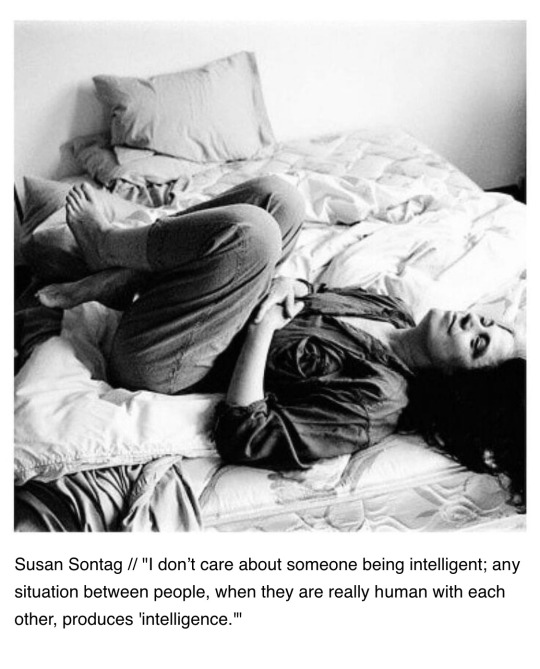#a.o. scott
Text
Nowhere was this brutal notion pursued with more ferocity than in the American South. “It was unlawful, as well as unsafe, to teach a slave to read,” Frederick Douglass writes in his “Narrative of the Life” recalling the admonitions of one of his masters, whose wife had started teaching young Frederick his letters. If she persisted, the master explained, their chattel would “become unmanageable, and of no value to his master. As to himself, it could do him no good, but a great deal of harm. It would make him discontented and unhappy.”
Reflecting on these words, Douglass writes, “I now understood what had been to me a most perplexing difficulty — to wit, the white man’s power to enslave the Black man.” From that moment, he grasped that “the pathway from slavery to freedom” ran through the printed word, and “that education and slavery were incompatible with each other.”
“Narrative of the Life of Frederick Douglass, an American Slave” — the first of Douglass’s memoirs, published in 1845, when millions of Americans were still in bondage — is partly a heroic origin story, the account of how a young man endured horrific adversity to emerge as one of the leading orators and intellectuals of his time. It is also a carefully argued treatise on the nature of freedom, one that rescues that sparkling and elusive idea from abstraction, grounding it in the ethics and psychology of lived experience.
Among Douglass’s most powerful and painful revelations is that, on the subject of reading, his master was right. Completing his primary education with the help of white schoolchildren whom he bribed with scraps of bread, young Frederick found a copy of “The Columbian Orator,” a popular anthology of inspirational speeches and essays, many on the subject of liberty.
“As I read and contemplated the subject, behold! that very discontentment which Master Hugh had predicted would follow my learning to read had already come, to torment and sting my soul to unutterable anguish. As I writhed under it, I would at times feel that learning to read had been a curse rather than a blessing.” Douglass’s account of this anguish is one of the most lacerating parts of a book that does not shy away from the depiction of suffering. His despair mirrors his earlier exhilaration and arises from the same source. “I envied my fellow-slaves for their stupidity. I have often wished myself a beast. I preferred the condition of the meanest reptile to my own. Any thing, no matter what, to get rid of thinking!”
Douglass’s literary genius resides in the way he uses close attention to his own situation to arrive at the essence of things — to crack the moral nut of slavery and, in this case, to peel back the epistemological husk of freedom. Some of his pain, as predicted by Mandeville and Master Hugh, comes from the discrepancy between his thinking and his circumstances. He has freed his mind, but the rest has not followed. In time it would, but freedom itself brings him uncertainty and terror, an understanding of his own humanity that is embattled and incomplete.
–A.O. Scott, “Everyone Likes Reading. Why Are We So Afraid of It?” The New York Times, June 21, 2023
13 notes
·
View notes
Text
If we tried to remove them, the whole garment — our consciousness, in this unruly metaphor — might come unraveled.
If our brains are foundries, they are also warehouses, crammed full of clichés, advertising slogans, movie catchphrases, song lyrics, garbled proverbs and jokes we heard on the playground at recess in third grade. Also great works of literature. There are those who sift through this profusion with the fanatical care of mushroom hunters, collecting only the most palatable and succulent specimens. Others crash through the thickets, words latching onto us like burrs on a sweater. If we tried to remove them, the whole garment — our consciousness, in this unruly metaphor — might come unraveled.
— A.O. Scott, from "Like My Book Title? Thanks, I Borrowed It." (NY Times, March 28, 2024)
6 notes
·
View notes
Text
isaac's books in heartstopper s2
episode 1:

Tillie Walden: I Love This Part
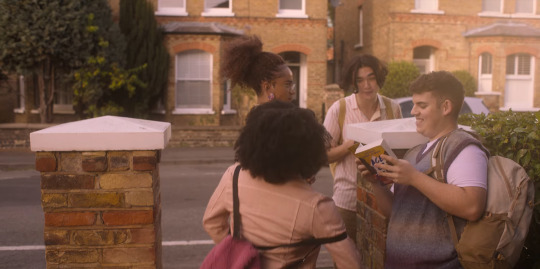
Faridah Àbíké-Íyímídé: Ace of Spades
episode 2:

Nina LaCour: We Are Okay
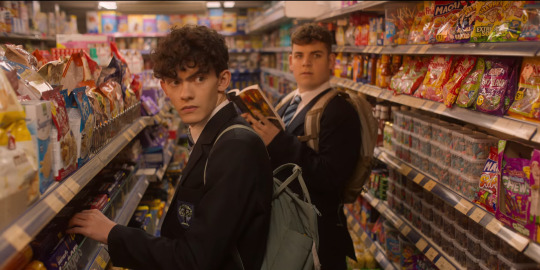
Oscar Wilde: The Importance of Being Earnest
episode 3:
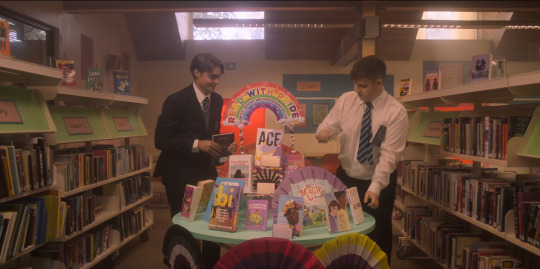
Ocean Vuong: Night Sky with Exit Wounds (the one he is carrying under his arm, I'm assuming that's his and not for the display?)

has read:
Ritch C. Savin-Williams: Bi: Bisexual, Pansexual, Fluid, and Nonbinary Youth

Emily Henry: Book Lovers
episode 4:

Victor Hugo: Les Misérables
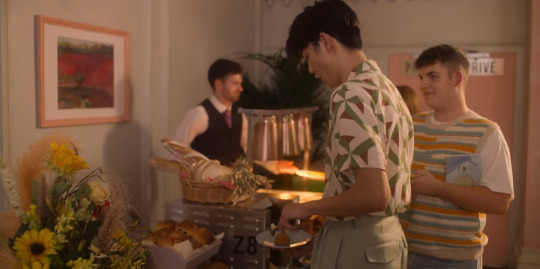
Antoine De Saint-Exupéry: The Little Prince

Kate Chopin: The Awakening

Nina LaCour: We Are Okay (again)
episode 5:

Albert Camus: The Outsider
episode 6:

Martin Handford: Where's Wally? The Great Picture Hunt

Meredith Russo: Birthday

Jules Verne: Around the World in Eighty Days

Sara Pennypacker: Pax
Anne Berest, Audrey Diwan, Caroline de Maigret, Sophie Mas: How to Be Parisian Wherever You Are
?
?
?
Damian Dibben: The Color Storm
Alice Oseman: Loveless
Susan Stokes-Chapman: Pandora
Katy Hessel: The Story of Art Without Men
?
Evelyn Waugh: Rossetti
Arthur Conan Doyle: The Hound of the Baskervilles
A.O. Scott: Better Living Through Criticism
?: Then We Came to an End (?)
Ruth Millington: Muse
Dr. Jaqui Lewis: Fierce Love
Charlotte Van Den Broek: Bold Ventures - Thirteen Tales of Architectural Tragedy
?

Richard Siken: Crush
episode 7:

Garrard Conley: Boy Erased

George Matthew Johnson: All Boys Aren't Blue

Samra Habib: We Have Always Been Here
episode 8:
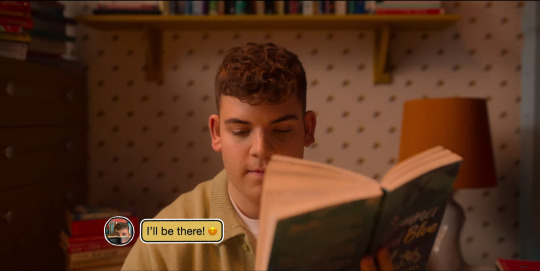
Akemi Dawn Bowman: Summer Bird Blue

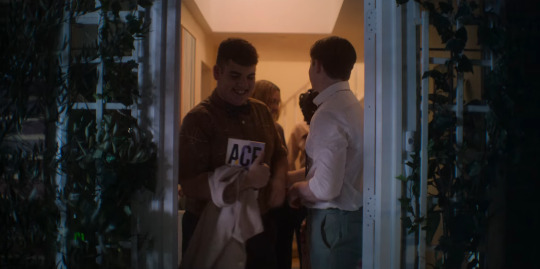
Angela Chen: Ace
bonus:

Truham school library pride display (seen in ep. 3 and 8):
top to bottom, left to right:
Angela Chen: Ace
Andrew Holleran: The Kingdom of Sand
Mary Jean Chan and Andrew McMillan: 100 Queer Poems
Scott Stuart: My Shadow Is Pink
Lotte Jeffs: My Magic Family
Tucker Shaw: When You Call My Name
Ritch C. Savin-Williams: Bi - Pansexual, Fluid, Nonbinary and Fluid Youth
Alok Vaid-Menon: Beyond the Gender Binary
George M. Johnson: All Boys Aren’t Blue
Mason Deaver: I Wish You All the Best
Alex Gino: George Melissa
on top of shelves (left to right):
Kevin Van Whye: Nate Plus One
Xixi Tian: This Place is Still Beautiful
Becky Albertalli: Leah on the Offbeat
Mya-Rose Craig: Birdgirl
Bernardine Evaristo: Girl, Woman, Other
Connie Glynn: Princess Ever After
Saundra Mitchell: The Prom
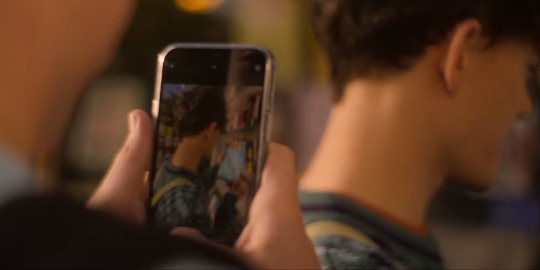
Charlie's choice at Shakespeare and Co (ep. 6):
Allan Hollinghurst: The Swimming Pool Library
That's it for now.
Sorry about the ones i couldn't identify and sorry if i missed any! Might try and do some of the ones in Isaac's room later but that'll take a minute
#hearstopper#heartstopper s2#isaac henderson#books#shakespeare and company#lgbt#charlie spring#alice oseman#aspec#aroace#aromantic#asexual#heartstopper season 2
223 notes
·
View notes
Text
The End of Reading (?)
There have been a lot of academic books and high-journalism opinions about the end of English Literature as a discipline or, even more alarming, the end of Reading itself. As both an English professor and a fan studies person, I take these claims with a grain of salt. Regarding literature as a field - well, there might be fewer English literature majors, but most students still want to take literature courses as part of their undergraduate degree, and I think many people still want to be guided in their reading towards stuff that is good. And capital R-Reading, from what I can see, isn’t in as much jeopardy as people think.
In his recent article, The Reading Crisis, A.O. Scott agrees,explaining that people have always worried about the state of reading, particularly where the kids are concerned:
Nowadays parents and other concerned adults worry that young people don’t read or love reading enough. Their counterparts in the 18th and 19th centuries were apt to fret that the young loved reading too much.
And as someone who’s spent much of my life in fanfiction reading and writing communities, I’ve never been worried that young people aren’t reading. They may be reading different things than people expect, but let’s face it: most people aren’t reading Paradise Lost (or at least not every day) and most stuff on the NY Times Best Sellers List isn’t anything particularly thought provoking or improving (the NYT Book Review of the same week as Scott’s essay is topped by the likes of James Patterson and John Grisham etc. I personally find fanfiction–or at least, the fanfiction stories I finish reading, which isn’t all of them–infinitely more thought provoking and improving!)
Scott concludes his essay by wandering into fannish territory, using D&D to describe some different ideas of reading and readers:
If you’ll forgive a Dungeons and Dragons reference, it might help to think of these types of reading as lawful and chaotic. Lawful reading rests on the certainty that reading is good for us, and that it will make us better people. We read to see ourselves represented, to learn about others, to find comfort and enjoyment and instruction. Reading is fun! It’s good and good for you.
Chaotic reading is something else. It isn’t bad so much as unjustified, useless, unreasonable, ungoverned. Defenses of this kind of reading, which are sometimes the memoirs of a certain kind of reader, favor words like promiscuous, voracious, indiscriminate and compulsive. Those terms, shadowed by connotations of pathology and vice, answer a vocabulary of belittlement — bookworm, bookish, book-smart — with assertions of danger. Bibliophilia is lawful. Bibliomania is chaotic.
I am both a lawful and chaotic reader–though chaotic reading is the most fun, isn’t it? :D
–Francesca Coppa, Fanhackers volunteer
#author: francesca coppa#fanhackers#the history of literature is the history of alarmist views about literature#those who don't study history are condemned etc.
56 notes
·
View notes
Text

An Open Letter in Support of Amber Heard
Five months ago, the verdict in the defamation trial between Johnny Depp and Amber Heard deeply concerned many professionals in the fields of intimate partner and sexual violence.
As many, including A.O. Scott for The New York Times have noted, the vilification of Ms. Heard and ongoing online harassment of her and those who have voiced support for her have been unprecedented in both vitriol and scale.
Much of this harassment was fueled by disinformation, misogyny, biphobia, and a monetized social media environment where a woman’s allegations of domestic violence and sexual assault were mocked for entertainment. The same disinformation and victim-blaming tropes are now being used against others who have alleged abuse.
In our opinion, the Depp v. Heard verdict and continued discourse around it indicate a fundamental misunderstanding of intimate partner and sexual violence and how survivors respond to it. The damaging consequences of the spread of this misinformation are incalculable. We have grave concerns about the rising misuse of defamation suits to threaten and silence survivors.
We condemn the public shaming of Amber Heard and join in support of her. We support the ability of all to report intimate partner and sexual violence free of harassment and intimidation.
(Check out https://amberopenletter.com/ to see the 130+ experts supporting Amber!)
#amber heard#i stand with amber heard#this is beautiful#over 130 experts supporting amber#support survivors#its about time
127 notes
·
View notes
Text
today, it is this – a.o. scott's review of aftersun on the new york times UGHHHH <3 i am loving all these aftersun reviews. here are some excerpts;
"... the power of the film comes from its embrace of the basic and universal fact of loss. It’s about a mostly happy experience — a father-daughter vacation in a resort town on the Turkish coast, with snorkeling excursions, hotel buffets and lazy hours by the pool — that ends in tears. Your tears."
"Sophie’s consciousness, her narrative instincts following the logic of emotion rather than the mechanics of plot. The boundaries between memory and experience aren’t so much blurred as rendered moot. And by the end of the movie you understand why: because that’s how mourning works."
"It’s hard to find a critical language to account for the delicacy and intimacy of this movie. This is partly because Wells, with the unaffected precision of a lyric poet, is very nearly reinventing the language of film, unlocking the medium’s often dormant potential to disclose inner worlds of consciousness and feeling."
"The rug is purchased at one of the rare moments when Sophie and Calum aren’t together, which is to say a moment that falls outside her memory even as it is part of her own story. Or rather, a piece of the story she and her father wrote together, which she has lived to tell."
24/10/2022
78 notes
·
View notes
Text
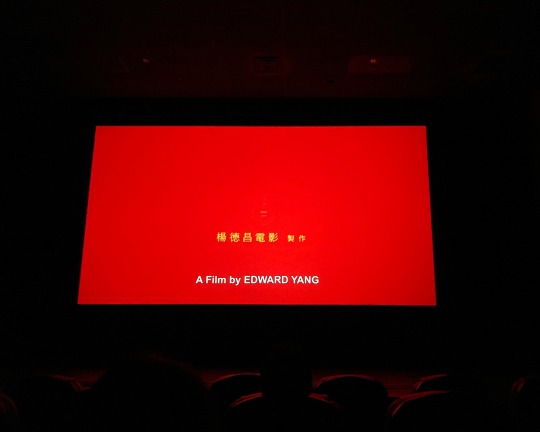
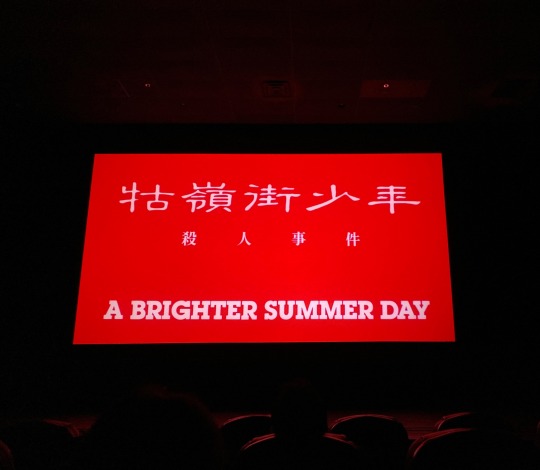
3 hours, 57 minutes, and everyone stayed until the end of the credits.
"A fantastic cinematic and artistic achievement, Edward Yang's A Brighter Summer Day depicts youth, ideals, violence and politics in a melancholic, tender light, culminating in a complex portrait of Taiwanese identity." — RottenTomatoes’ critics’ consensus
"In every aspect of technique —from the smoky colors and the bustling, off-center compositions to the architecture of the story and the emotional precision of the performances — this film is a work of absolute mastery." — A.O. Scott for The New York Times
Also one of Paul Dano’s Criterion Collection closet picks.
2 notes
·
View notes
Video
youtube
'Waking Life' | Critics' Picks | The New York Times
A.O. Scott reviews Richard Linklater's unclassifiable 2001 cartoon philosophy seminar.
5 notes
·
View notes
Text
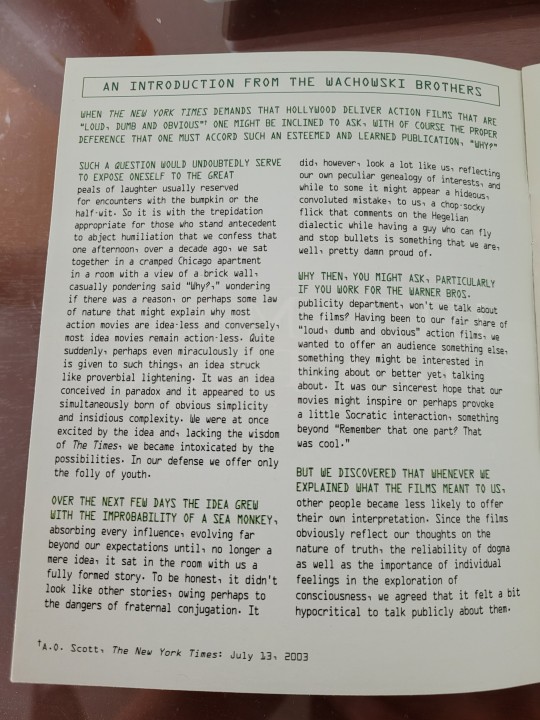
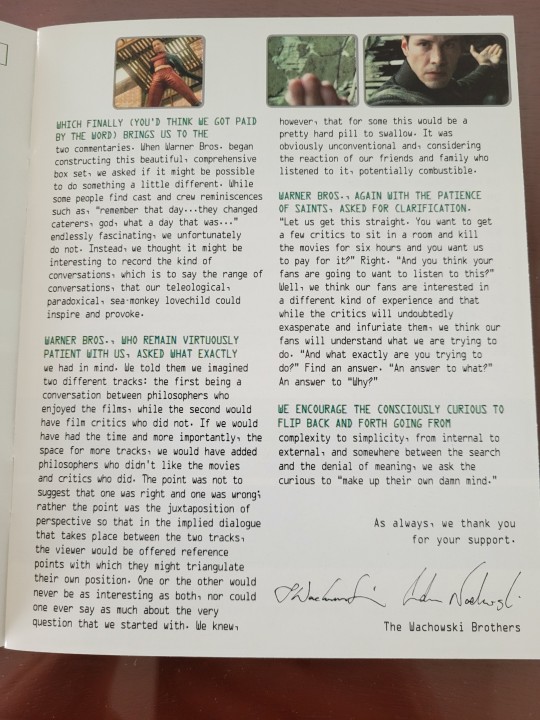
An Introduction from the Wachowski Sisters transcript:
When The New York Times demands that Hollywood deliver action films that are “loud, dumb and obvious”† one might be inclined to ask, with of course the proper deference that one must accord such an esteemed and learned publication, “Why?”
† A.O. Scott, The New York Times: July 13, 2003
Such a question would undoubtedly serve to expose oneself to the great peals of laughter usually reserved for encounters with the bumpkin or the half-wit. So it is with the trepidation appropriate for those who stand antecedent to abject humiliation that we confess that one afternoon, over a decade ago, we sat together in a cramped Chicago apartment in a room with a view of a brick wall, casually pondering said “Why?,” wondering if there was a reason, or perhaps some law of nature that might explain why most action movies are idea-less and conversely, most idea movies remain action-less. Quite suddenly, perhaps even miraculously if one is given to such things, an idea struck like proverbial lightning. It was an idea conceived in paradox and it appeared to us simultaneously born of obvious simplicity and insidious complexity. We were at once excited by the idea and, lacking the wisdom of The Times, we became intoxicated by the possibilities. In our defense we offer only the folly of youth.
Over the next few days the idea grew with the improbability of a sea monkey, absorbing every influence, evolving far beyond our expectations until, no longer a mere idea, it sat in the room with us a fully formed story. To be honest, it didn’t look like other stories, owing perhaps to the dangers of fraternal conjugation. It did, however, look a lot like us, reflecting our own peculiar genealogy of interests, and while to some it might appear a hideous, convoluted mistake, to us, a chop-socky flick that comments on the Hegelian dialectic while having a guy who can fly and stop bullets is something that we are, well, pretty damn proud of.
Why, then, you might ask, particularly if you work for the Warner Bros. publicity department, won’t we talk about the films? Having been to our fair share of “loud, dumb and obvious” action films, we wanted to offer an audience something else, something they might be interested in thinking about or better yet, talking about. It was our sincerest hope that our movies might inspire or perhaps provoke a little Socratic interaction, something beyond “Remember that one part? That was cool.”
But we discovered that whenever we explained what the films meant to us, other people became less likely to offer their own interpretation. Since the films obviously reflect our thoughts on the nature of truth, the reliability of dogma as well as the importance of individual feeling in the exploration of consciousness, we agreed that it felt a bit hypocritical to talk publicly about them.
Which finally (you’d think we got paid by the word) brings us to the two commentaries. When Warner Bros. began constructing this beautiful, comprehensive box set, we asked if it might be possible to do something a little different. While some people might find cast and crew reminiscences such as, “remember that day…they changed caterers, god, what a day that was…” endlessly fascinating, we unfortunately do not. Instead, we thought it might be interesting to record the kind of conversations, which is to say the range of conversations, that our teleological, paradoxical, sea-monkey lovechild could inspire and provoke.
Warner Bros., who remain virtuously patient with us, asked what exactly we had in mind. We told them we imagined two different tracks: the first one being a conversation between philosophers who enjoyed the films, while the second would have film critics who did not. If we would have had the time and more importantly, the space for more tracks, we would have added philosophers who didn’t like the movies and critics who did. The point was not to suggest that one was right and one was wrong; rather the point was the juxtaposition of perspective so that in the implied dialog that takes place between the two tracks, the viewer would be offered reference points with which they might triangulate their own position. One or the other would never be as interesting as both, nor could one ever say as much about the very question that we started with. We knew, however, that for some this would be a pretty hard pill to swallow. It was obviously unconventional and, considering the reaction of our friends and family who listened to it, potentially combustible.
Warner Bros., again with the patience of saints, asked for clarification. “Let us get this straight. You want to get a few critics to sit in a room and kill the movies for six hours and you want us to pay for it?” Right. “And you think your fans are going to want to listen to this?” Well, we think our fans are interested in a different kind of experience and that while the critics will undoubtedly exasperate and infuriate them, we think our fans will understand what we are trying to do. “And what exactly are you trying to do?” Find an answer. “An answer to what?” An answer to “Why?”
We encourage the consciously curious to flip back and forth from complexity to simplicity, from internal to external, and somewhere between the search and the denial of meaning, we ask the curious to “make up their own damn mind.”
As always, we thank you for your support.
L Wachowski / [redacted] Wachowski
#the matrix#long post#every sentence of this is so funny. the hard pill to swallow. 'fraternal conjugation' 💀#i lovvve when The Girls Get Pretentious
8 notes
·
View notes
Text
Just what is reading, anyway? What is it for? Why is it something to argue and worry about? Reading isn’t synonymous with literacy, which is one of the necessary skills of contemporary existence. Nor is it identical with literature, which designates a body of written work endowed with a special if sometimes elusive prestige.
Reading is something else: an activity whose value, while broadly proclaimed, is hard to specify. Is any other common human undertaking so riddled with contradiction? Reading is supposed to teach us who we are and help us forget ourselves, to enchant and disenchant, to make us more worldly, more introspective, more empathetic and more intelligent. It’s a private, even intimate act, swathed in silence and solitude, and at the same time a social undertaking. It’s democratic and elitist, soothing and challenging, something we do for its own sake and as a means to various cultural, material and moral ends.
When I was a child, Saturday morning cartoons were sometimes interrupted by public service announcements from Reading Is Fundamental, an organization dedicated to putting books in the hands of underprivileged children. The group’s slogan was “Reading Is Fun!” Fun and fundamental: Together, those words express a familiar utilitarian, utopian promise — the faith that what we enjoy doing will turn out to be what we need to do, that our pleasures and our responsibilities will turn out to be one and the same. It’s not only good; it’s good for you.
But nothing is ever so simple. Reading is, fundamentally, both a tool and a toy. It’s essential to social progress, democratic citizenship, good government and general enlightenment. It’s also the most fantastically, sublimely, prodigiously useless pastime ever invented. Teachers, politicians, literary critics and other vested authorities labor mightily to separate the edifying wheat from the distracting chaff, to control, police, correct and corral the transgressive energies that propel the turning of pages. The crisis is what happens either when those efforts succeed or when they fail. Everyone likes reading, and everyone is afraid of it.
–A.O. Scott, “Everyone Likes Reading. Why Are We So Afraid of It?” The New York Times, June 21, 2023
11 notes
·
View notes
Video
youtube
PINA - "Seasons march" clip - amazing movie for Pina Bausch by Wim Wenders!
* * * * *
3-D Tribute to Artistic Impulse
By A.O. Scott
Dec. 22, 2011
One of the interesting and unexpected film stories of 2011 is about 3-D, which simultaneously lost commercial potency and gained artistic credibility. Those who dismiss the format as the industrial gimmick (and excuse for price gouging) that it frequently is may need to reconsider now that a handful of certified auteurs have given it a try. Steven Spielberg and Martin Scorsese, grand old men of baby-boomer Hollywood, have made 3-D children’s tales (“The Adventures of Tintin” and “Hugo”), which is certainly noteworthy. More remarkable, perhaps even astonishing, is that Werner Herzog and Wim Wenders, stalwarts and survivors of the iconoclastic New German Cinema of the 1970s, have used 3-D in new documentaries.
Mr. Herzog’s “Cave of Forgotten Dreams” and Mr. Wenders’s “Pina” are explorations of the artistic impulse, primordial and postmodern. “Pina” is a tribute to Pina Bausch, the German dancer and choreographer who died in 2009. Her work has appeared on film before; Pedro Almodóvar’s “Talk to Her” uses the dance “Café Müller” as an emotional touchstone. That piece, an obstacle course of wooden chairs and wild emotions set to music by Henry Purcell, figures prominently in “Pina,” encapsulating both Bausch’s aesthetic and Mr. Wenders’s desire to replicate on screen the depths and distances of the staging. A Photo Slide Show of Bausch’s Work
The dances in “Pina” take place on traditional stages and also on city sidewalks and tram cars (in Wuppertal, the northwestern German city where Bausch’s company is based), in forests and fields and, thanks to an especially ingenious coup de cinema, in what looks like a portable box. Alternating between highly stylized, precise gestures — of hands, fingers and faces as well as torsos and limbs — and more flowing and expressive movements, the dancers enact dramas of desire, sexual violence and the passage of time.
The cumulative effect is exhilarating and also a bit frustrating, since so many dances are included and woven together the audience does not have the chance to experience any single work in its entirety. But the power and intelligence of Bausch’s approach, which at times seems more cerebral than sensual, is communicated. And there are moments when her discipline and Mr. Wenders’s visual instincts harmonize perfectly, so that instead of enduring yet another well-meaning specimen of “dance on film” you are experiencing dance and film, fully and simultaneously.
In addition to the performances, “Pina” includes interviews with dancers, their words dubbed over their silent, contemplative faces. Instead of talking heads, they are thinking bodies, reflecting on the influence of their mentor. Their devotion to Bausch is evident, though the glowing tributes they offer also suggest that, like many charismatic artists, she cultivated something of a cult of personality. Diverse in age, body type and background, the dancers — speaking French, Russian, Portuguese, Japanese and other languages — convey their awe and gratitude in notably similar terms. “Pina used to say, ‘Be more crazy.’ ” “Pina used to say, ‘Surprise me.’ ” This is touching, but it leaves any analysis of her creative process and the ideas that drove it shrouded in a mist of generality.
But criticism is not really what Mr. Wenders intends. Choreography is a notoriously perishable art. Dances often struggle to outlive their creators. And “Pina” is, above all, an act of preservation, a memorial that is also a defiance of mortality — completely alive in every dimension.
PINA
Written and directed by Wim Wenders; directors of photography, Hélène Louvart and Jörg Widmer; edited by Toni Froschhammer; music by Thom Hanreich; produced by Mr. Wenders, Gian-Piero Ringel, Wolfgang Bergmann, Gabriele Heuser and Dieter Schneider; released by Sundance Selects. In German, English, Russian, Italian, French, Slovenian, Korean, Spanish and Portuguese, with English subtitles. Running time: 1 hour 43 minutes. This film is not rated.
14 notes
·
View notes
Text
Blog 5
Throughout my blog entry experience, I have focused on the somewhat well known director Romain Gavras. I say a somewhat well known director because he is also known for wearing many different hats, like producing music vidoes. I have seen a few tweets and posts here and there regarding Romain and who he is. I attribute that to his dating history as he was known for being in a relationship with Dua Lipa… which can speak some volume.

This image was the photo that spread like wildfire…
Anyways, through my journey I have developed my own opinion towards this director so I was curious to see what critics have said about him as well. I found one critic who wrote about Romain back in 2010, which intrigued me to see if he has any character development. The critic named Lauren Cochrane started her review by setting an image in my mind. She described him as a smoker with a trucker's mouth and this bad boy attitude. I was surprised to find out that Romain does not have the best reputation on youtube, which is more in regards to his music videos. Romain has developed a very controversial title, many critics seem to not bat an eye at this man. Romain lives up to this reputation of the bad boy attitude. When confronted with the controversial title he repsoned with, “If I wanted to be controversial, I would ahve Nazis raping children or something”. Overall Romain Gavras is not loved by most critics.

Here he is, smoking that cigarette.
Here is a link to Lauren Cochranes post in the Gaurdian.
Jay-Z & Kanye West - No Church In The Wild ft. Frank Ocean, The-Dream
This video is one of the music videos Romain did, it was for Jay-Z and Kanye West's “No Church In The Wild”. This video alone has over 100 million views. Even though this video is over ten years old, there are a lot of similarities to his 2022 movie Athena. There seems to be a heavy focus on violence, fighting, and political war. There were even some moving camera techniqes I saw in the video that seemed to be the same as some of the ones in Athena. Made me question his development overtime, if he really has gotten any new ideas or skills?
Athena- | fight scene | Athena fight clips| Athena 2022-
This video shows one of the most intense battle scenes in the movie where you can see a bottle being lit on fire and thrown on the ground just like what happened in the 2010 music video.
In addition to focusing on Romain Gavras I chose to focus heavily on one of his most recent films called Athena. I knew about this movie before doing my blogs because luckily this movie was released on Netflix, which was where it got its popularity from. Critic Tomris Laffly probably sums up the movie the best. He said, “You arent likelky to see a more rightfully angry film this year than “Athena”, a non-atop opus examining the racism, inequality, and police violence that wreak havoc on France's banlieue communities of color”. I do not think you could get a better cover of what Athena is.
This is the link to more of what Tomris has to say about Athena.

Here is a picture of just one of the intense scenes in Athena, taking in all the chaos and movement even though this is a paused moment in time.
There is another critic A.O Scott, who seems to be very impressed by the filmmaking of this movie. He said that he thought that it was technically impressive. In Athena we see many long shots, and unique camera skills. Scott describes this work as these breathless takes. Critic Justin Chang also talked heavily about the camera work. Something he noted was how this film was done in a way that made it seem like it was all done in one shot, which speaks to the camera skills in this directing. Finally, critic John Serba thought that the technique in this film was marvelous. That seems to be the overall review of the film. People are blown away by the camera work and directing skills Romain has. Although they are just as equally impressed by the message of the film. How it captures violence, police btrutality and racism perfectly for the time and place.
Here is the link to A.O Scott review
Here is the link to Justin Changs review
Here is the link to John Serbas review

Here is an image that captures the power and strength in the movement these brothers started, they are quite literally facing the battle ahead and they look ready for it.
ATHENA - Fuite du commissariat (VF)
This video is another fast-paced scene of one of the moments from the political movement.
2 notes
·
View notes
Text

A Review of Moonlight (dir. Barry Jenkins) by A.O. Scott
#film review#film#lgbt films#filmblr#studyblr#studyspo#writeblr#barry jenkins#moonlight#writing#booklr#romantic academia#chaotic academia
5 notes
·
View notes
Text
Fantastic Beasts and Where You Fined Them (Review)
Christopher Nolan strikes again in this return to the Batman franchise. Eddie Redmane dons the cowl and, with the assistance of his winged compatriots, battles the Riddler (stunningly portrayed by Colin Feral) for control of New York City. Much like Nolan's Dunkirk, Fantastic Beasts is set at some point before now. However, unlike Dunkirk and its historically faithful depiction of Operation Market Garden, Nolan allows himself to depart from the historical record with Fantastic Beasts and instead embraces some of the whimsy that has largely been absent from his work since 2010's hit Reception.
Die-hard Batman fans will rejoice. Although the crusader has misplaced his cape and is now British, he is still meting out justice, this time with a small wooden stick. Katherine Stonwater cuts a dashing figure as Commissioner Gordon, with Ezra Pound's Flash making a few explosive cameos. Much of the content of the film remains obscure. Nolan has forgone his characteristic muddled audio and (in a move that evokes Mel Gibson's Passion of the Christ except without the subtitles) has the characters speak arcane Latinate jargon at the most pivotal moments of pointing their sticks.
I was late arriving to the theater so I can't speak to the first 40 or so minutes of the film, though A.O. Scott tells me it was riveting. What I did see upon arrival was unlike anything I'd ever seen, which I did not see coming. Unfortunately, the other thing I did not see coming was the early symptoms of food poisoning. The bulk of the film therefore remains largely opaque to this reviewer, although I can report that Johnny Depth showed up at the end, presumably to return as the Joker in the sequel.
#review#movie review#fantastic beasts#movie reviews#comedy writing#humor writing#movies#edfrankward rev
1 note
·
View note
Text
Zur Abwicklung des Musikmediums "Pitchfork" und grundsätzlich zur Krise eines ambitionierten Kulturjournalismus in unserer Zeit.
Ein lesenswerter Text von Johannes Franzen (z.B. via @johannesfranzen.bsky.social ) für 54books.
0 notes
